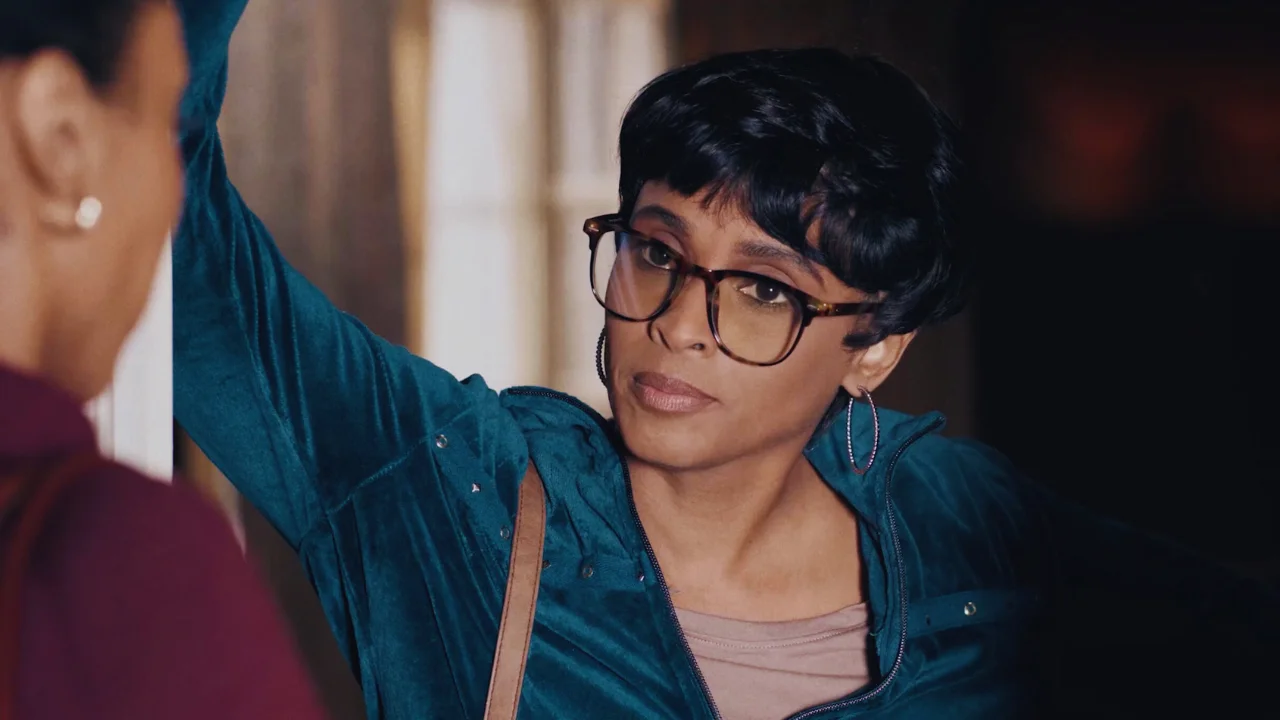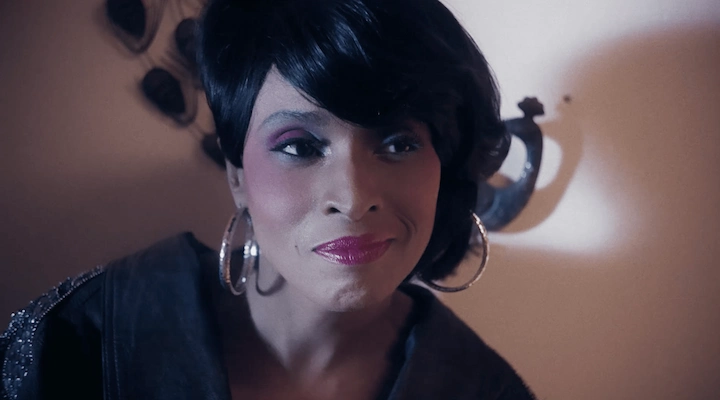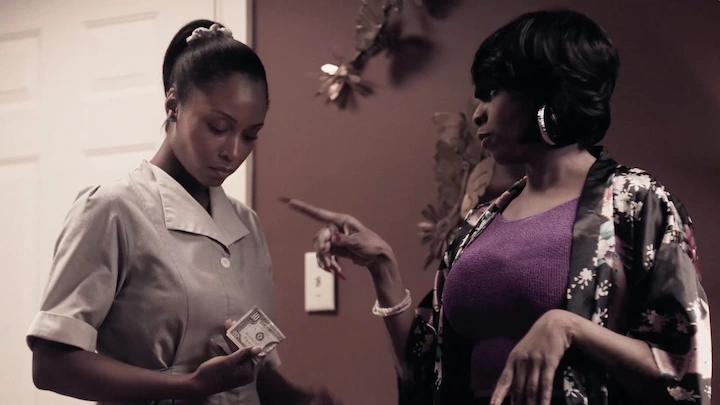Beyond “Not My Family”: The True Story of Monique Smith’s Search for Identity
Monique Smith (Jasmyn Bieber) discovers some shocking news about the family she grew up with in the Lifetime movie Not My Family: The Monique Smith Story. Set between 1976 and 2025, the film follows Monique’s progression from a girl who suffers childhood trauma to a woman finally uncovering her true identity after a tragedy.
Her memoir, “I Am The Ancestor: Before I Die, I Must Share My Story,” describes her emotional reunion with her biological family and her work to help find other missing children. Monique’s tale touches on themes of trauma, bravery, and the quintessential human desire to know where we came from.
Monique’s Life Was About More Than Abuse
Monique Smith believed no one wanted her. She received little love—both parents worked as caretakers and were often too busy with that role to care for their daughter.
However, the woman she referred to as mother, Elizabeth, was a cruel and vicious dictator of a household, subjecting her daughter to ongoing abuse from the age of 3. The only kindness she experienced was from her grandmother, who cared for her in the madness.
Monique’s trauma was compounded by the sexual abuse she was subjected to by two men she thought were her uncles, Eddie and Leroy. The abuse went on from the age of 4 to 18, causing deep emotional scars that would take years to heal.
“I always felt different, like I didn’t belong,” Monique told Interview in later interviews. This wasn’t just an emotional sensation; something profound was missing within her that she could not have articulated.
When Monique turned 13, she courageously chose to escape. She packed her belongings, took some money, and left a goodbye note for her grandmother. She had planned to begin again elsewhere, but the universe had other plans. Someone stole Monique’s money on her bus ride from Baltimore.
Alone and stranded, she encountered a woman named Caroline who gave her assistance and a roof over her head. This sounded like a lucky break, but Caroline’s real scheme was to prostitute Monique. This painful chapter compounded Monique’s trauma, ensnaring her in yet another abusive situation when she was most vulnerable.
The Search For Truth Begins
As Monique grew into adulthood, she began to piece her life back together. She found a job, made a friend, Rubye, who helped her, and eventually met Jonathan, whom she married. Monique built stability for herself and became a mother of two for the first time.
However, being a mother raised questions Monique couldn’t ignore. She asked herself how any mother could treat a child with the hatred Elizabeth directed toward her. That opened something bigger: Was Elizabeth her mother? When Monique required her birth certificate for legal purposes, Elizabeth declined to give it.
“I don’t have no papers for you,” she said, which deepened Monique’s suspicions. It was not until she was 28 that Monique’s journey to find herself began. She called government agencies, completed countless forms, and ultimately learned jarring new information—her real name wasn’t what she’d been told, and she had been living under an assumed name.
“It was devastating and freeing to discover that my identity for the last 37 years had all been a lie,” Monique said. “I knew I had to discover who I was,” Monique reported her case to the FBI, and the police listed her as Missing Child No. 129.
She hung flyers around New York with photos of missing kids, hoping a stranger might recognize her story. When asked if she was searching for her daughter, she would say, “No, I am the one who is missing. I need help finding me.”
A New Family — And The Truth — Through DNA
Monique’s search for answers repeatedly hit dead ends for years. Elizabeth’s refusal to reveal the truth was so extreme that, at one point, she said, “I will go to my grave but never tell you the truth.” When Elizabeth died, Monique worried the answers would die with her.
But new technologies held promise. Monique collaborated with a DNA detective who put her in touch with Trinity, a genetic researcher specializing in genealogy. The DNA match was painstaking, and the labs worked through to the 1850s, but it linked Monique to her true mother, Margaret.
This discovery resulted in an emotional phone call with Ruth Harrison, whom Monique now thought could be her older sister. Though shocked, Ruth asks Monique to send a photograph to ascertain her identity.
Looking at the picture, Ruth immediately recognized Monique as her sister, whom she hadn’t seen in years. “ You are not alone,” Ruth told her, tearfully. “It’s time you come out — you have seven sisters and many nieces and nephews waiting to meet you.”
She learned that her real name was Symbolie Harrison. She also learned the hard truth that her biological mother, Margaret, had died of an overdose of heroin when Monique was about 8. As Ruth could not say how Monique had made her way to Elizabeth, it emerged Monique had been moved from New York to Baltimore at two or so.
Monique was brought to tears during the emotional reunion with her biological family. It took her decades to find that place — where she belonged. “I may never know what exactly happened to me,” Monique reflects, “but I do know I am a survivor. I know I am loved. I know I have roots. “I am the root of my family tree.”
Turning Pain Into Purpose With Monique Smith Today
Symbolie Monique Smith is around 59 years old and has four children. In 2013, she created a nonprofit organization that finds missing people, especially children, and brings them back to their families.
Her organization can offer them critical resources such as legal advice, emotional support, investigative advice, and assistance contacting police and the media. Loyally, Monique collaborates with the National Center for Missing and Exploited Children and offers insight that only one who survived childhood kidnapping could possess.
In 2015, Monique released her autobiography, “I Am the Ancestor: Before I Die, I Must Share My Story,” chronicling her journey from abuse to healing. She speaks at schools, community centers, and conferences about self-identity, empowerment, and awareness for child safety.
“There’s so much more to my story than what happened to me,” Monique tells audiences during her lectures. “It’s about getting others home and making sure no other kid goes through what I went through.”
The Lifetime Movie: A Putrefied Story of Monique
Lifetime’s Not My Family: The Monique Smith Story, directed by Tailiah Breon and written by Sylvia Jones, maintains the emotional heart of Monique’s journey despite its silliness. Yaya DaCosta plays Monique with formidable vulnerability and strength.
While the film doesn’t sugarcoat the challenges Monique faced in her life, it doesn’t dwell on them, spending much more time exploring her tenacity and search for her authentic self.
Over almost five decades, the film details Monique’s journey from a scared little girl to a powerful woman using it to help others. The director, Tailiah Breon, told the story through Monique’s eyes, showcasing her internal journey rather than sensationalizing the trauma.
This creates a more genuine emotional resonance for viewers who watch Monique change over the years. The film concludes with a footage of Symbolie Monique Smith, reminding us that this miraculous tale of survival and self-discovery is accurate.
Frequently Asked Questions
Was Monique Smith abused as a child?
Monique Smith was abducted at the age of 2 from New York and brought to Baltimore, where she was raised under an assumed identity by a woman known as Elizabeth, who inflicted horrendous abuse on her.
How did Monique find out that she was not with her true family?
When Monique required her birth certificate as an adult, she found discrepancies between what she knew and what was on file, forcing her to seek the truth of her identity and ultimately uncover the fact she had been abducted.
Did Monique Smith find her birth family?
Yes, Monique found out through DNA testing that her real name was Symbolie Harrison, and she was subsequently reunited with her seven biological sisters and extended family.
What occurred with Monique’s biological mother?
Monique discovered that her biological mother, Margaret, died of a heroin overdose when Monique was about 8.
What is Monique Smith doing now?
Monique now co-leads a nonprofit that assists missing people and their loved ones. She speaks publicly on child safety and self-identity and published her autobiography in 2015.
Where to Stream “Not My Family: The Monique Smith Story”?
The movie was shown on Lifetime and can be streamed on Lifetime’s streaming platforms or video-on-demand services.
Final Words
Many women came forward with their own stories of their journey from stolen child to lost cause — but Monique Smith took her experience and used it to fuel a smoldering fire that would lead her in a race for stolen children everywhere.
Her story illustrates how we can heal after trauma and emphasizes identity’s significance.” The reunions come through her story, which has inspired others to take back their sense of home, to help them find missing children, and to help families find closure.
Her declaration—I am the first tree trunk of my family tree—speaks to the lost among us that even in her family’s brokenness, she could graft herself onto new branches, and we can, too. Above all, Monique’s story mirrors what was stolen from her troupe and what she took back: her identity tribe, another cause of uplift.
Table of Contents



